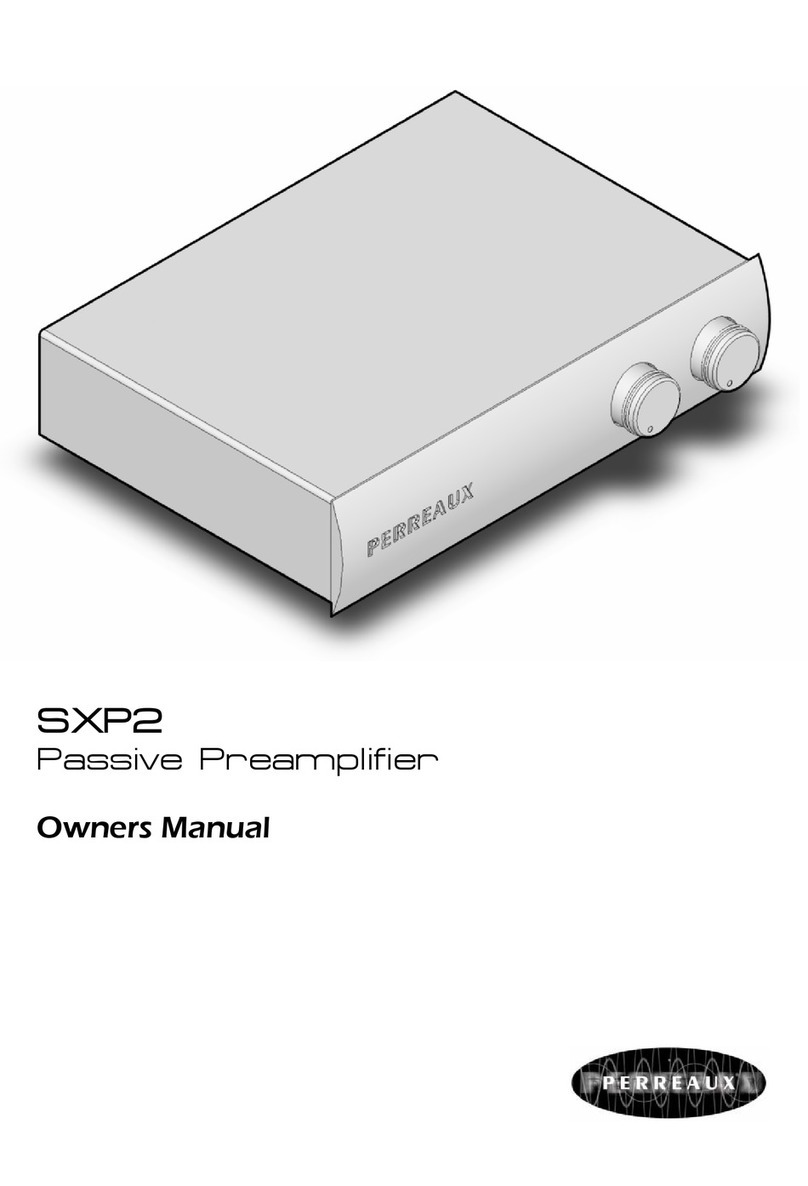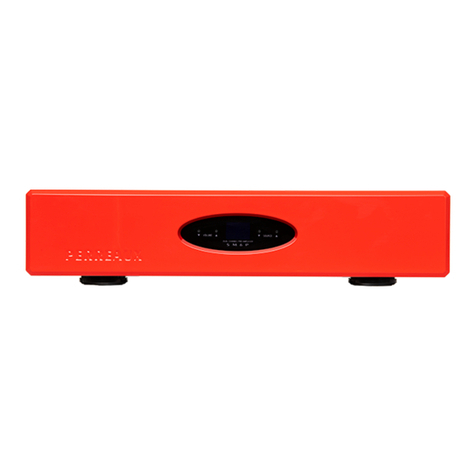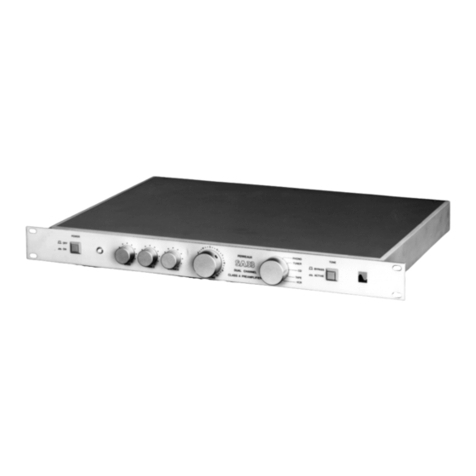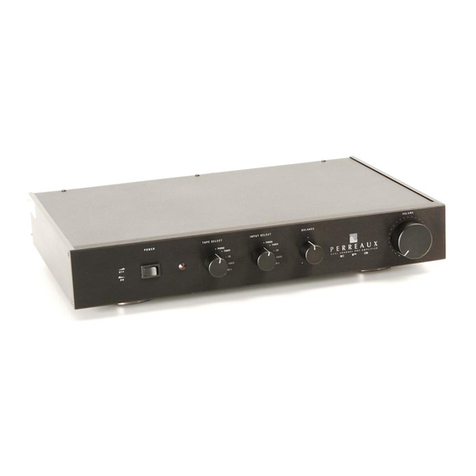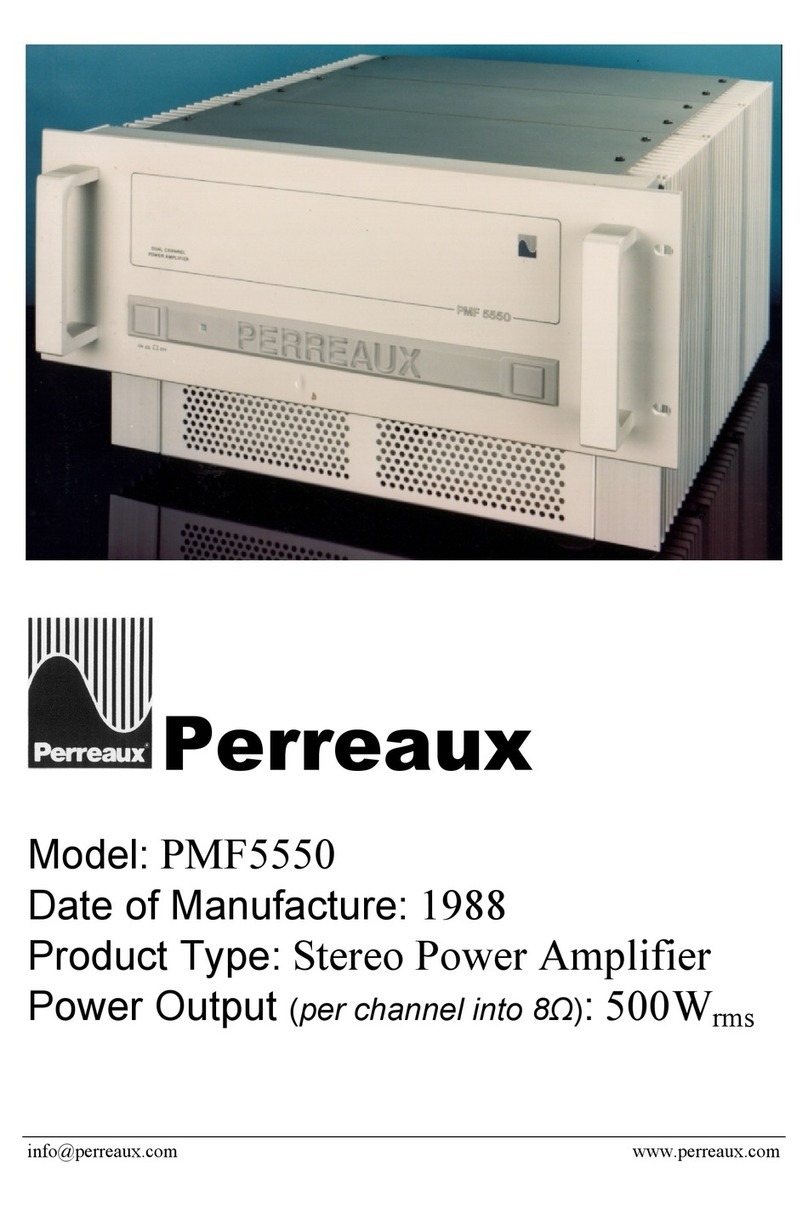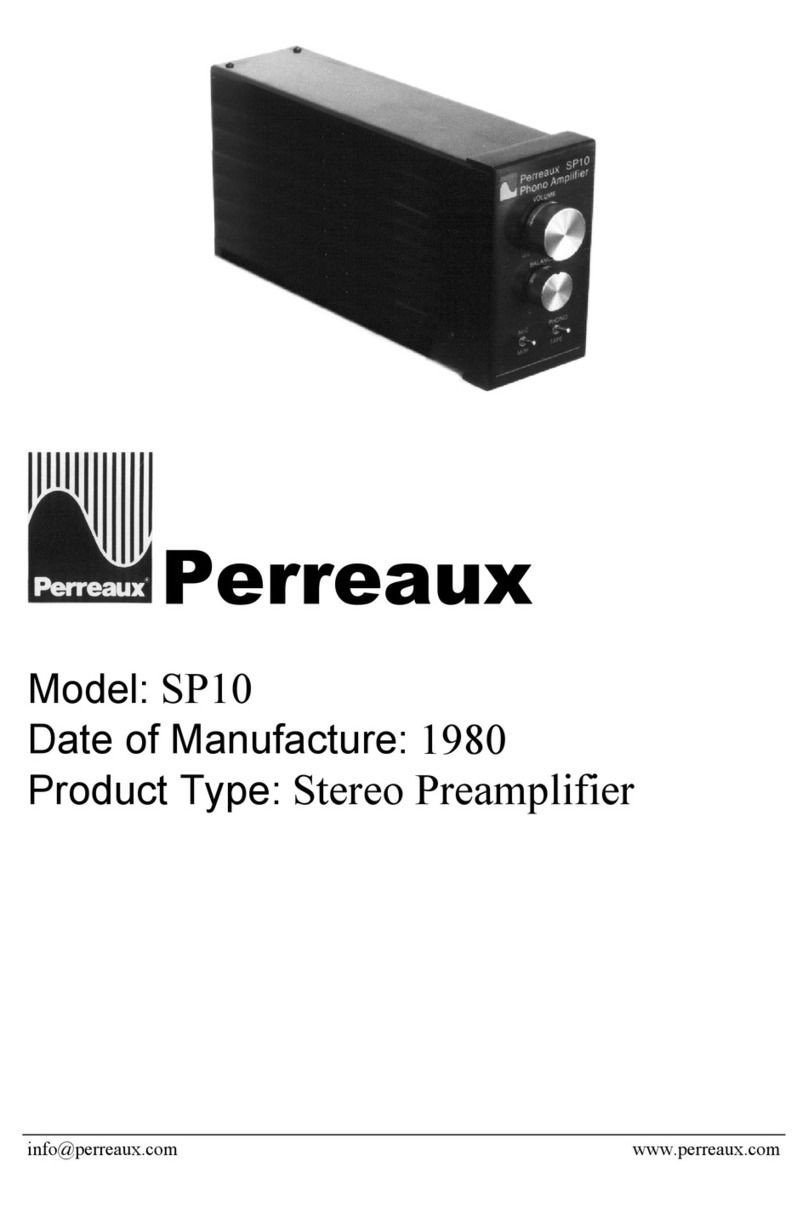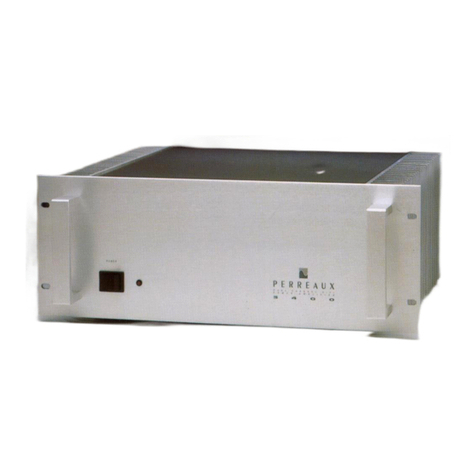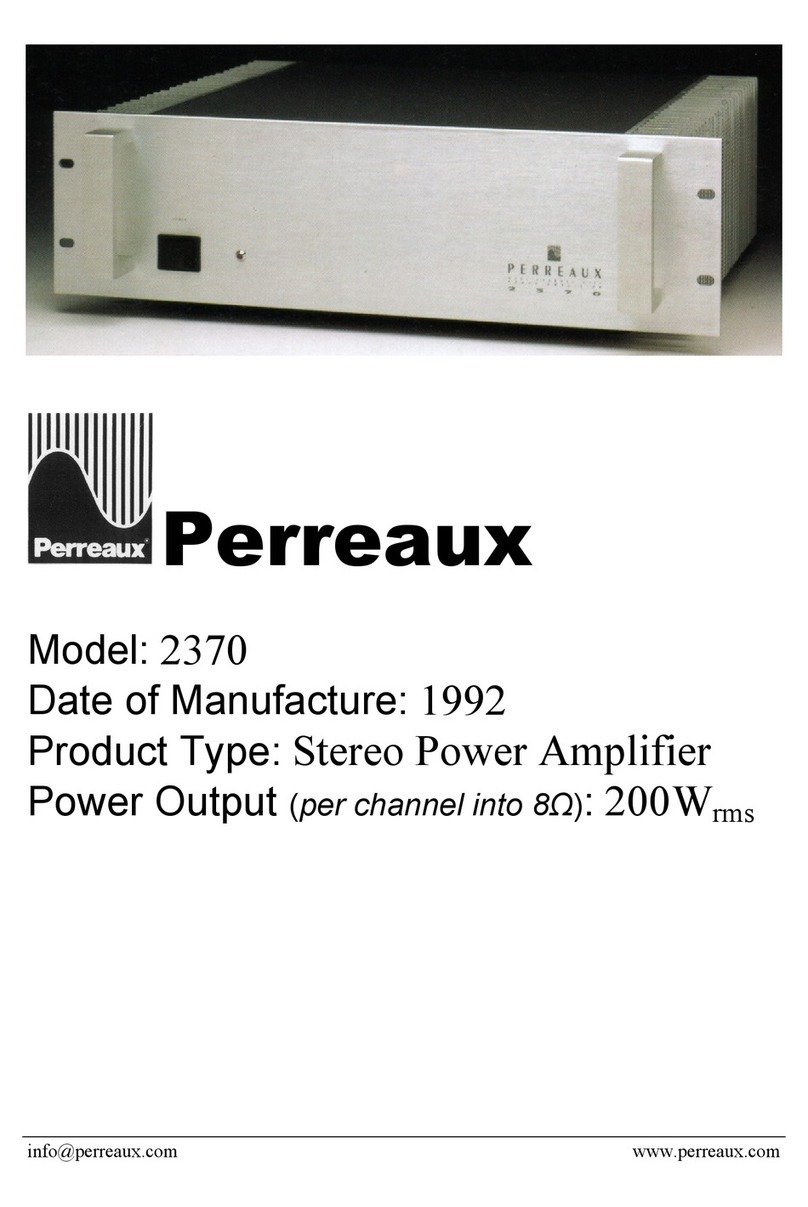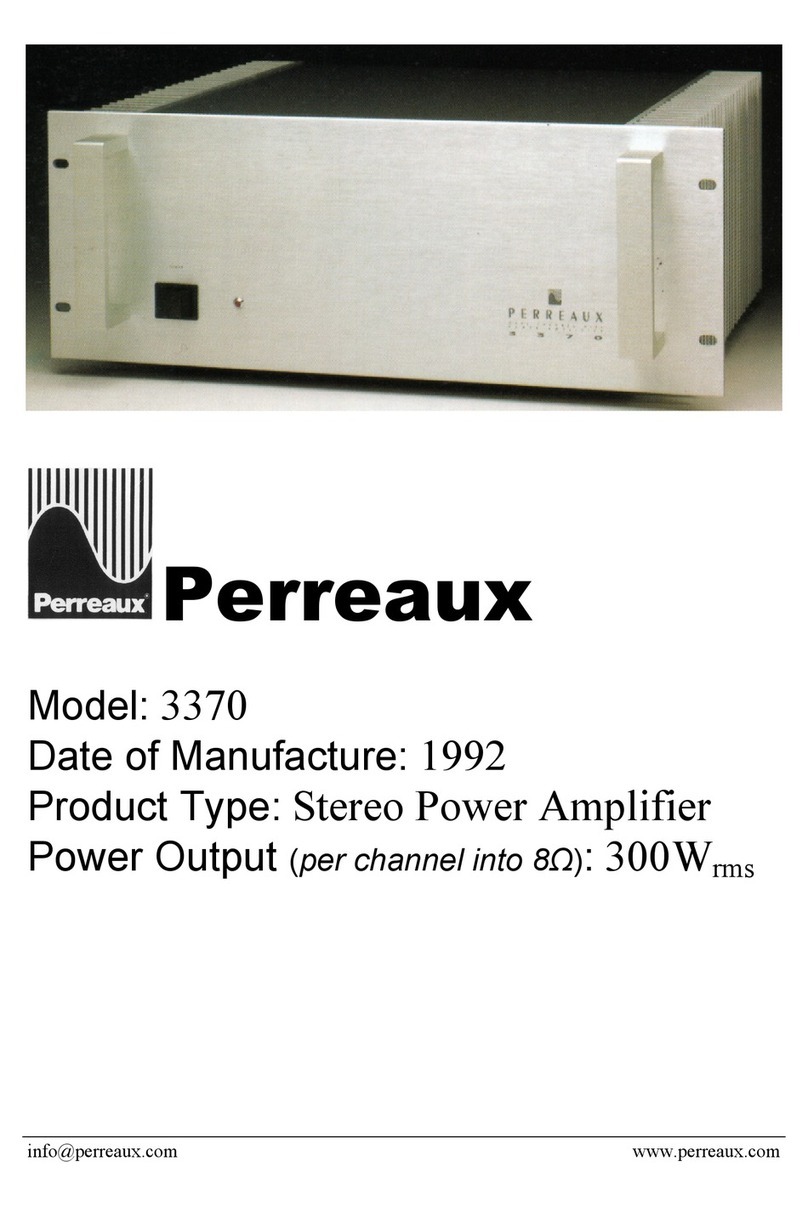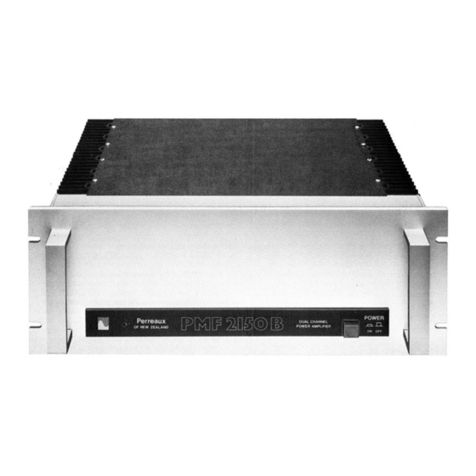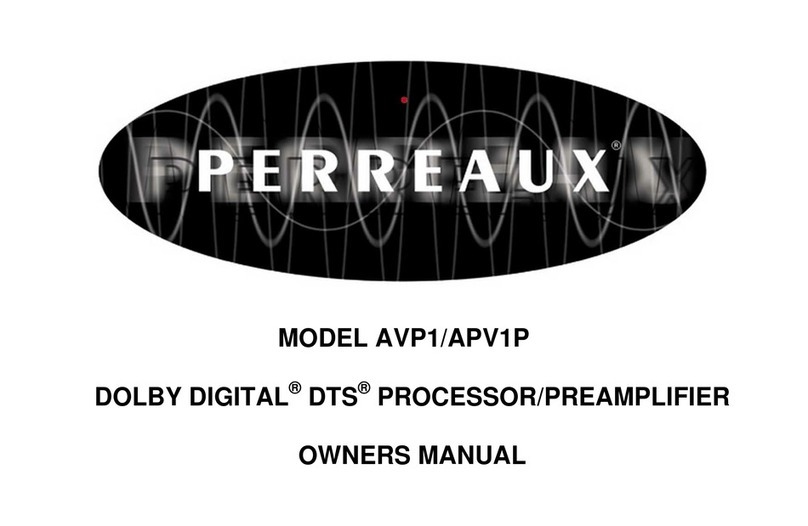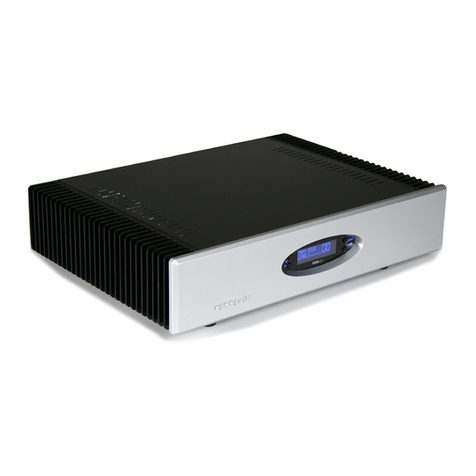iii
iiiiii
iii
Table of ontents
i
ii
i
Introducing the Perreaux 200 MkII Power Amplifier............................................ 3
ii
iiii
ii
Important afety Instructions.................................................................................... 4
iii
iiiiii
iii
Table of Contents......................................................................................................... 5
1
11
1
Unpacking and Placement......................................................................................... 6
2
22
2
Instant Install................................................................................................................ 7
3
33
3
Front Panel Functions................................................................................................. 9
4
44
4
Rear Panel Functions ................................................................................................ 10
5
55
5
pecial Design Philosophies .................................................................................... 13
6
66
6
pecial Design Features............................................................................................ 15
7
77
7
Maximising ystem Potential................................................................................... 17
8
88
8
The Power MO FET................................................................................................... 19
9
99
9
Care and Maintainance ............................................................................................ 22
10
1010
10
Warranty Information and Obtaining ervice ..................................................... 23
11
1111
11
Extended Warranty Registration Form ................................................................. 24
12
1212
12
Faultfinding Your ystem ......................................................................................... 25
13
1313
13
pecifications.............................................................................................................. 30
14
1414
14
Contact Details........................................................................................................... 33

